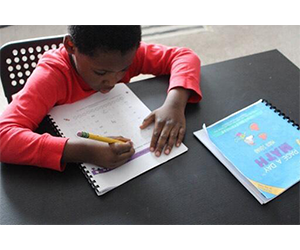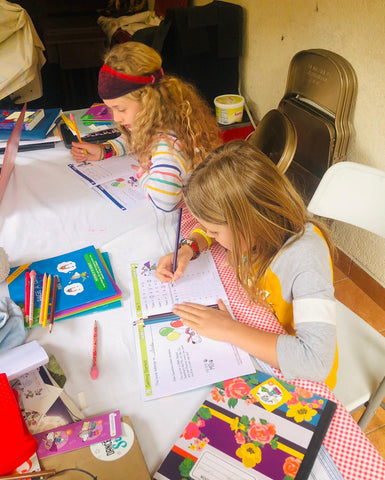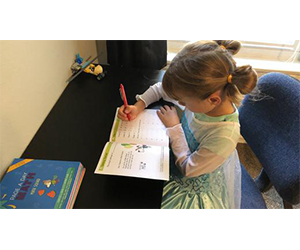
Repetition? Repetition. Repetition!
Why Repetition in Learning Is Crucial
I became curious about the importance of repetition in learning when I started helping my own children with math at a very young age. Since that time I have learned a tremendous amount about the science behind why repetition is not just beneficial to learning, but critical to it. So I wanted to share with you a to-do and to-NOT-do list for repetition in learning. But first, a little more on why it is so important.
What Repetition Does For The Brain
Repetition strengthens those pathways in the brain that are vital for the quick, effortless recall of information. Over time, skills that children practice repeatedly become automated. And as children discover how easy things that were once difficult can become, it turns into confidence! "As well as strengthening connections in the brain, repetition has strong emotional implications for young learners. Children enjoy repetition because it helps them feel confident with a new skill and allows them to actively participate." Baudin, Jessica. "Repetition, repetition, repetition is good." Intellidance,http://blog.intellidance.ca/blog/2-09-2011/repetition-repetition-repetition-good. Accessed October 1, 2018."
Children love repetition that seems tedious and monotonous to adults. We all know this because of how many times a child will ask for the same story, or song, or rhyme. Why do these things never seem to get old? Jessica Baudin explains more. "Children use repetition to practice skills such as anticipation, prediction, and cause and effect. Being able to predict what happens next in a story, dance class, or even daily routine leaves children feeling confident and secure, thus contributing to their self-esteem."
How to Use Repetition to Promote Learning
These little sponges of knowledge come hardwired to learn. But that doesn't mean there aren't better and worse ways to go about using repetition when trying to teach new information. Here are a few tips to remember.
Chunking
When you're looking to introduce new information - think bite-sized. Trying to learn a single new math fact a day may not seem like a lot. But consider that that means 30 a month and 180 in six months! The goal is to make the task manageable, not overwhelming. And as they start to see success, it builds their confidence. Soon, even young children begin to notice how many new things they are learning.
For example, if you practicing with flashcards try mixing one new math fact a day with a few they're a little shaky on and a bunch they know really well. Their success will make them excited to do more, and the new learning will add up fast!
Spacing
"As you may have guessed, spaced repetition involves repeating what you are trying to retain—like a new math equation, the sentence structure of a foreign language, a new vocabulary word, or a new jiu-jitsu move—over a period several days/weeks. Research has shown that repeating something twenty times over the course of one day is less effective than repeating something ten times over the course of a week." Tri. "Why Spaced Repetition Is Important to Learning and How to Do It." Examined Existence, https://examinedexistence.com/why-spaced-repetition-is-important-to-learning-and-how-to-do-it/. Accessed October 1, 2018.
Think of repetition as playing the long game. You may repeat a new skill a lot when it is first introduced. But don't forget to follow up on it over the course of the several days and weeks. The goal is to commit the new skill or information into long-term memory. So exercise those little brains by asking them to repeatedly recall the information over longer periods of time after short breaks of not practicing. This is the best way to reinforce those neural pathways.
Mindset
One of the most important things for any learning experience is the right mindset and environment. Try to bring a positive upbeat attitude. And pick your timing carefully.
The great thing about repetitive learning is that a quick session can be worked in multiple times a day. Look for times when your child is likely to be receptive. You could try quizzing math facts at bath time, in the car, or over dinner. Just because it's learning doesn't mean it has to feel like school. Aim for 10 to 20 minutes a day of practice.
But if that isn't working, for whatever reason, remember that any time spent practicing is better than none. Focus on the big picture, if you think practice is drudgery, they will start to as well.
Fun
Kids naturally think repetition not just fun, but funny . . . hilarious even. I learned the value of this teaching my own kids their math facts. Be silly. Make them laugh. Incorporate practice into playtime. Adults often find repetition boring. So there is no better way for everyone to enjoy the process than to make it a game.
One of the tricks I discovered while teaching is that some kids really enjoy timing themselves while they work. Inexpensive egg timers (mini-hourglasses) work great. Some children love to flip them over and see how many flash-cards, math problems, etc. they can complete before it runs out. Just remember to introduce this as an optional game, not a mandatory timed test.
How NOT to Use It
After discussing the to-do's of using repetition in learning, the Thou-Shalt-Not's are fairly self-explanatory.
- Don't try to do too much. One new fact or piece of information a day is plenty. Truly it is. And if you need to scale that down, that's fine too! A child who beings in kindergarten to learn one new math fact daily would have all their addition, subtraction, multiplication, and division facts memorized by second grade!
- Don't forget to review. Practicing, practicing, practicing one day and then not revisiting the skill for weeks does little good. To really build those brain connections, it's better to practice a new skill or fact a few times a day, and then space further practice out over the next several days and weeks.
- Don't force it. The goal should be to keep the fun in a process that children already see as fun. If your child is hating practice sessions, give it a break and try again after some time has passed.
How PAGE A DAY MATH Does It
PAGE A DAY MATH implements all of these critical elements of repetitive and incremental learning into its program by:
- introducing only one new math fact daily,
- practicing a mix of new and previously mastered facts,
- keeping daily math exercises to an optimal amount for reinforcement without overwhelming, and
- including plenty of positivity and fun!
And don't forget that if your child is not ready to complete even a page a day, less than that is fine! Progress is progress, and the goal of PAGE A DAY MATH is to teach every child that they can be a "math person" one math fact at a time.
To try a sample math book from one of our math kits, click here.
Try our complimentary flashcards, click here.
About the Author and Creator of Page A Day Math
 Janice Marks
Janice Marks
Janice began her career in education to pursue teaching pre-algebra at BASIS Tucson North, a charter school currently ranked as the sixth-best STEM school in the country by Newsweek. There she found joy in teaching math, working with parents, and inspiring children to believe in themselves and thrive. This experience, along with helping her own children succeed in math, led her to develop the Page A Day Math system.
To try a sample book from one of our math kits, click here.





